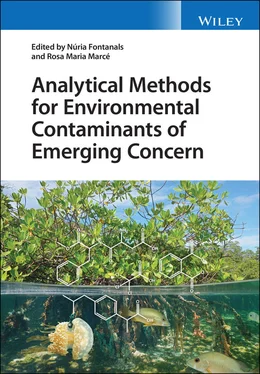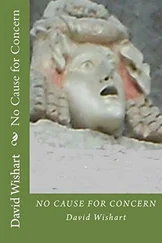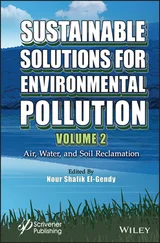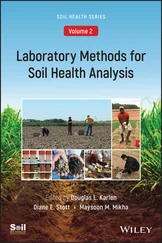Analytical Methods for Environmental Contaminants of Emerging Concern
Здесь есть возможность читать онлайн «Analytical Methods for Environmental Contaminants of Emerging Concern» — ознакомительный отрывок электронной книги совершенно бесплатно, а после прочтения отрывка купить полную версию. В некоторых случаях можно слушать аудио, скачать через торрент в формате fb2 и присутствует краткое содержание. Жанр: unrecognised, на английском языке. Описание произведения, (предисловие) а так же отзывы посетителей доступны на портале библиотеки ЛибКат.
- Название:Analytical Methods for Environmental Contaminants of Emerging Concern
- Автор:
- Жанр:
- Год:неизвестен
- ISBN:нет данных
- Рейтинг книги:5 / 5. Голосов: 1
-
Избранное:Добавить в избранное
- Отзывы:
-
Ваша оценка:
- 100
- 1
- 2
- 3
- 4
- 5
Analytical Methods for Environmental Contaminants of Emerging Concern: краткое содержание, описание и аннотация
Предлагаем к чтению аннотацию, описание, краткое содержание или предисловие (зависит от того, что написал сам автор книги «Analytical Methods for Environmental Contaminants of Emerging Concern»). Если вы не нашли необходимую информацию о книге — напишите в комментариях, мы постараемся отыскать её.
Provides the analytical methodology required to detect different families of organic compounds of emerging concern (CECs) from environmental samples Analytical Methods for Environmental Contaminants of Emerging Concern
Analytical Methods for Environmental Contaminants of Emerging Concern
Analytical Methods for Environmental Contaminants of Emerging Concern — читать онлайн ознакомительный отрывок
Ниже представлен текст книги, разбитый по страницам. Система сохранения места последней прочитанной страницы, позволяет с удобством читать онлайн бесплатно книгу «Analytical Methods for Environmental Contaminants of Emerging Concern», без необходимости каждый раз заново искать на чём Вы остановились. Поставьте закладку, и сможете в любой момент перейти на страницу, на которой закончили чтение.
Интервал:
Закладка:
10 10European Union (2013). Directive 2013/39/EU of the European Parliament and of the Council of 12 August 2013 amending Directives 2000/60/EC and 2008/105/EC as regards priority substances in the field of water policy. Official Journal of the European Union L226: 1–17.
11 11European Union (2020). Commission implementing Decision (EU) 2020/1161 of 4 August 2020 establishing a watch list of substances for Union-wide monitoring in the field of water policy pursuant to Directive 2008/105/EC of the European Parliament and of the Council. Official Journal of the European Union L257: 32–35.
12 12European Union (2015). Commission Directive (EU) 2015/1787 of 6 October 2015 amending Annexes II and III to Council Directive 98/83/EC on the quality of water intended for human consumption. Official Journal of the European Union L260: 6–17.
13 13European Union (2006). Directive 2006/118/EC of the European parliament and of the Council of 12 December 2006 on the protection of groundwater against pollution and deterioration. Official Journal of the European Union L372: 19–31.
14 14US EPA (2020). Water quality criteria. https://www.epa.gov/wqc. Accessed 14 December 2021.
15 15 US EPA (2020). National primary drinking water regulations. https://www.epa.gov/ground-water-and-drinking-water/national-primary-drinking-water-regulations#Organic. Accessed 14 December 2021.
16 16US EPA (2020) Main water legislation. https://www.epa.ie/water/waterleg. Accessed 14 December 2021.
17 17Spanish Ministry of Presidency (2005). Royal Decree 9/2005 of 14 January which establishes a list of potentially soil contaminating activities and criteria and standards for declaring that sites are contaminated. Official Gazette of the Spanish State 15: 1833–1843.
18 18Wong, K.L.K., Webb, D.T., Nagorzanski, M.R., Kolpin, D.W., Hladik, M.L., Cwiertny, D.M., and LeFevre, G.H. (2019). Chlorinated byproducts of neonicotinoids and their metabolites: an unrecognized human exposure potential? Environ. Sci. Technol. Lett. 6: 98–105. doi: 10.1021/acs.estlett.8b00706.
19 19Kiss, A. and Virág, D. (2009). Photostability and photodegradation pathways of distinctive pesticides. J. Environ. Qual. 38: 157–163. doi: 10.2134/jeq2007.0504.
20 20Ibáñez, M., Sancho, J.V., Pozo, Ó.J., and Hernández, F. (2006). Use of liquid chromatography quadrupole time-of-flight mass spectrometry in the elucidation of transformation products and metabolites of pesticides. Diazinon as a case study. Anal. Bioanal. Chem. 384: 448–457. doi: 10.1007/s00216-005-0167-6.
21 21Li, M., Wang, R., Kong, Z., Gao, T., Wang, F., and Fan, B. (2020). Cyflumetofen degradation in different aquatic environments and identification of hydrolytic products. J. Environ. Chem. Eng. 8: 104512. doi: 10.1016/j.jece.2020.104512.
22 22Hensen, B., Olsson, O., and Kümmerer, K. (2020). A strategy for an initial assessment of the ecotoxicological effects of transformation products of pesticides in aquatic systems following a tiered approach. Environ. Int. 137: 105533. doi: 10.1016/j.envint.2020.105533.
23 23Fonseca, E., Renau-Pruñonosa, A., Ibáñez, M., Gracia-Lor, E., Estrela, T., Jiménez, S., Pérez-Martín, M.A., González, F., Hernández, F., and Morell, I. (2019). Investigation of pesticides and their transformation products in the Júcar River Hydrographical Basin (Spain) by wide-scope high-resolution mass spectrometry screening. Environ. Res. 177: 108570. doi: 10.1016/j.envres.2019.108570.
24 24Quintana, J., de La Cal, A., and Boleda, M.R. (2019). Monitoring the complex occurrence of pesticides in the Llobregat basin, natural and drinking waters in Barcelona metropolitan area (Catalonia, NE Spain) by a validated multi-residue online analytical method. Sci. Total Environ. 692: 952–965. doi: 10.1016/j.scitotenv.2019.07.317.
25 25Fisher, I.J., Phillips, P.J., Bayraktar, B.N., Chen, S., McCarthy, B.A., and Sandstrom, M.W. (2021). Pesticides and their degradates in groundwater reflect past use and current management strategies, Long Island, New York, USA. Sci. Total Environ. 752: 141895. doi: 10.1016/j.scitotenv.2020.141895.
26 26 Kiefer, K., Müller, A., Singer, H., and Hollander, J. (2019). New relevant pesticide transformation products in groundwater detected using target and suspect screening for agricultural and urban micropollutants with LC-HRMS. Water Res. 165: 114972. doi: 10.1016/j.watres.2019.114972.
27 27Reemtsma, T., Alder, L., and Banasiak, U. (2013). Emerging pesticide metabolites in groundwater and surface water as determined by the application of a multimethod for 150 pesticide metabolites. Water Res. 47: 5535–5545. doi: 10.1016/j.watres.2013.06.031.
28 28Lopez-Ruiz, R., Romero-González, R., and Garrido-Frenich, A. (2019). Residues and dissipation kinetics of famoxadone and its metabolites in environmental water and soil samples under different conditions. Environ. Pollut. 252: 163–170. doi: 10.1016/j.envpol.2019.05.123.
29 29Tiwari, M.K. and Guha, S. (2013). Simultaneous analysis of endosulfan, chlorpyrifos, and their metabolites in natural soil and water samples using gas chromatography-tandem mass spectrometry. Environ. Monit. Assess. 185: 8451–8463. doi: 10.1007/s10661-013-3186-3.
30 30Peterson, M.A., McMaster, S.A., Riechers, D.E., Skelton, J., and Stahlman, P.W. (2016). 2,4-D past, present, and future: a review. Weed Technol. 30: 303–345. doi: 10.1614/wt-d-15-00131.1.
31 31Pietrzak, D., Kania, J., Kmiecik, E., Malina, G., and Wator, K. (2020). Fate of selected neonicotinoid insecticides in soil–water systems: current state of the art and knowledge gaps. Chemosphere 255 (126981). doi: 10.1016/j.chemosphere.2020.126981.
32 32Dereumeaux, C., Fillol, C., Quenel, P., and Denys, S. (2020). Pesticide exposures for residents living close to agricultural lands: a review. Environ. Int. 134: 105210. doi: 10.1016/j.envint.2019.105210.
33 33Nascimento, M.M., Da Rocha, G.O., and De Andrade, J.B. (2018). Pesticides in the atmospheric environment: an overview on their determination methodologies. Anal. Methods. 10: 4484–4504. doi: 10.1039/c8ay01327f.
34 34Stehle, S., Bline, A., Bub, S., Petschick, L.L., Wolfram, J., and Schulz, R. (2019). Aquatic pesticide exposure in the U.S. as a result of non-agricultural uses. Environ. Int. 133: 105234. doi: 10.1016/j.envint.2019.105234.
35 35European Environment Agency (2018). European waters. Assessment of status and pressures 2018. EEA Report No 7/2018. Available at: https://www.eea.europa.eu/publications/state-of-water. Accessed 14 December 2021.
36 36Sjerps, R.M.A., Kooij, P.J.F., van Loon, A., and Van Wezel, A.P. (2019). Occurrence of pesticides in Dutch drinking water sources. Chemosphere 235: 510–518. doi: 10.1016/j.chemosphere.2019.06.207.
37 37Pérez, D.J., Iturburu, F.G., Calderon, G., Oyesqui, L.A.E., De Gerónimo, E., and Aparicio, V.C. (2021). Ecological risk assessment of current-use pesticides and biocides in soils, sediments and surface water of a mixed land-use basin of the Pampas region, Argentina. Chemosphere 263: 128061. doi: 10.1016/j.chemosphere.2020.128061.
38 38Ordaz-Guillén, Y., Galíndez-Mayer, C.J., Ruiz-Ordaz, N., Juárez-Ramírez, C., Santoyo-Tepole, F., and Ramos-Monroy, O. (2014). Evaluating the degradation of the herbicides picloram and 2,4-D in a compartmentalized reactive biobarrier with internal liquid recirculation. Environ. Sci. Pollut. Res. 21: 8765–8773. doi: 10.1007/s11356-014-2809-8.
39 39Magnoli, K., Carranza, C.S., Aluffi, M.E., Magnoli, C.E., and Barberis, C.L. (2020). Herbicides based on 2,4-D: its behavior in agricultural environments and microbial biodegradation aspects. A review. Environ. Sci. Pollut. Res. 27: 38501–38512. doi: 10.1007/s11356-020-10370-6.
40 40Andreu, V. and Picó, Y. (2012). Determination of currently used pesticides in biota. Anal. Bioanal. Chem. 404: 2659–2681. doi: 10.1007/s00216-012-6331-x.
Читать дальшеИнтервал:
Закладка:
Похожие книги на «Analytical Methods for Environmental Contaminants of Emerging Concern»
Представляем Вашему вниманию похожие книги на «Analytical Methods for Environmental Contaminants of Emerging Concern» списком для выбора. Мы отобрали схожую по названию и смыслу литературу в надежде предоставить читателям больше вариантов отыскать новые, интересные, ещё непрочитанные произведения.
Обсуждение, отзывы о книге «Analytical Methods for Environmental Contaminants of Emerging Concern» и просто собственные мнения читателей. Оставьте ваши комментарии, напишите, что Вы думаете о произведении, его смысле или главных героях. Укажите что конкретно понравилось, а что нет, и почему Вы так считаете.












